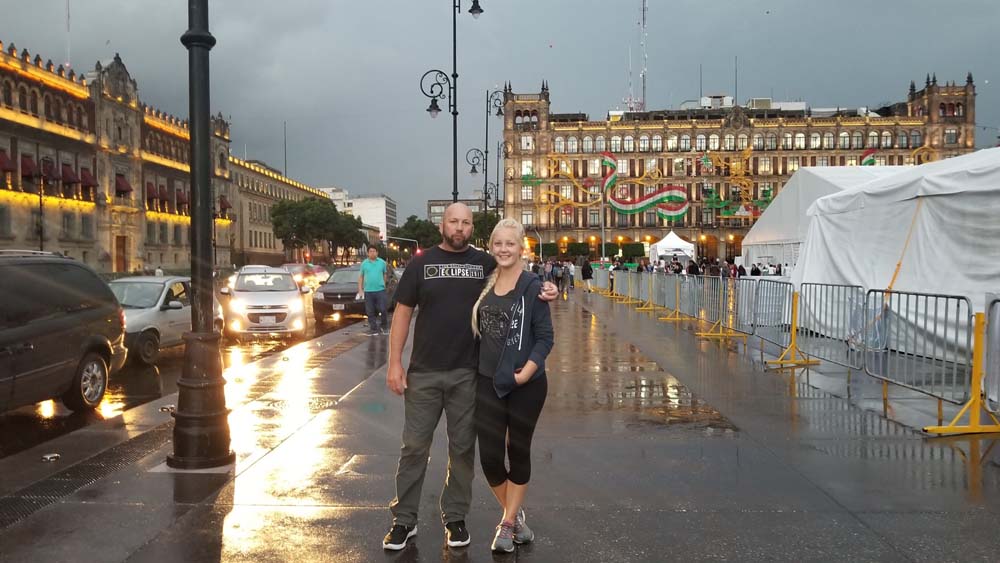 Adventuriety
Adventuriety
Our days in Mexico City were a bit surreal. I couldn’t help but think about Charles Wallace, the incredibly intuitive child on a dangerous, multi-dimensional quest in the children’s book, A Wrinkle in Time. He profoundly observed to his sister that “This is a traveling time.” It was a traveling time for us, literally, yes, but figuratively for sure. We were in a time of transition and I think looking back that while Mexico City might have seemed a strange choice for this moment in our lives, it certainly represented the deep and complicated emotions and thoughts of our changing family.
We spent one week in Mexico City and aside from two days of tours, we wandered around and just took in the sights. The first day we spent recovering from our trip which included for Scott, a four-day drive to Chicago, turning 45, some Chicago “touristing,” a flight to New York City, moving Grant into his dorm at college and saying goodbye. For Ashley, it was a flight to Chicago, spending some alone time with me, turning 15, a flight to New York City, enduring two days of “Grant activities,” and then a flight to Mexico City. For me, it was saying goodbye to Grant and a lot of flying. We were all tired and so our first day we slept in and then we walked to Walmart. I know, I know…Walmart is the first place you visit in Mexico City? Remember, it’s the journey and not the destination!
But first, coffee! Here is a picture of my fledgling attempt at ordering coffee to go. Didn’t work out so well, but by the time we left Mexico City, I could say, “Me gustaria un café con leche…para llevar, por favor!”… “I would like a coffee with milk… to go, please!”
We walked to Walmart in Mexico City. Mexico City begins a new era in our family. It is the era of Ashley as our only resident child (we still claim you, Grant). Lucky her, right? Well, my grandfather used to say the firstborn is just practice and my mother, who I am pretty sure was his favorite, was also his firstborn. Anyway, our practice child is off to college and so for the next three years, we get to focus all of our wonderful parenting energy on Ashley. We also get to try and correct in her the mistakes we feel that we made on our practice child. That’s where Walmart comes in.
One parenting lesson that becomes evident, and I’ve heard this from all of my friends who have already sent a child off to college, is that the week before you send them off, you begin to realize the things that you probably should have taught them. For example, what items would one need to clean a bathroom and where would one shop for them? So we (mostly Scott, because he is the reflective one between the two of us) decided that we still have time to teach Ashley a few skills that we forgot to get to in Grant (I can’t even think about those bathrooms in his dorm apartment shared with 5 other boys).
So, first things first in Mexico City. Parenting! Ashley was in charge of planning a few meals, making a list for the grocery store, finding a grocery store, and navigating us to it. She chose Walmart as the shopping option and guided us through busy streets and alleys.
The walk was interesting and included quotes from Victor Hugo and many food stands. Ashley stopped us at a fruit stand where we bought tall plastic cups of watermelon, hers drizzled in honey and ours sprinkled with chili powder. I like her in charge, so far!
We arrived at Walmart and after a bit of confusion as to where to leave our backpacks, since the guard wouldn’t let us in the store with them, we shopped. No good trip to anyplace new is complete without a trip to the grocery store because there is so much living going on and usually a lot to discover. We found the ingredients to prepare some healthy, Ashley-planned meals, a knife, and frying pan (essential tools that are always in bad shape in vacation rentals). Scott learned this on our last year-long adventure and he learned how to refurbish a frying pan, a trick I use regularly when I have carelessly used his special egg frying pan.
And for reading this blog, you have earned the frying pan trick for eggs! Heat up some oil in your sticky pan until it is hot. Dump in a bunch of salt. Wipe out the oil and salt with paper towels. The pan is now “seasoned” to be a nonstick egg pan. Instead of washing with soap and water, just wipe out the pan. It’s magic!
We stopped at a tiny tortilla maker stand and purchased a huge stack of tortillas for $1 and then walked back to our apartment.
To say that there is a lot going on in Mexico City is an understatement. I went for random walks most days and one day when I was waiting to cross the street with a gazillion other people, a man asked me what time it was…a strange question these days since everyone has a phone, but I showed him the time anyway and he started talking to me…in English. The light changed and we crossed the street together. He asked me where I was from and then if I liked Mexico City, a question I was asked often during our time in the country. I told him that I hadn’t seen very much but I loved the culture, hearing Spanish everywhere, the people, the art, the history…he told me that he really liked how the location of the buildings in the city tell the story of its history. It was an interesting observation and he had a really good point. There are the ruins of the Aztecs in the center, surrounded by Spanish colonial buildings and then shiny, modern skyscrapers can be found in the financial district.
The Plaza de la Constitución or Zócalo (its common name, meaning “base”) is the center of it all, the heart of Centro Historico. The ancient ruins of Templo Mayor, mark the site of Tenochtitlan, the capital of the Aztec Empire (Sailboats and History in Mexico City). The archeological site lies cuddled up against impressive colonial architecture in the form of cathedrals, museums, and government buildings. Stretching out from the city center, colonial buildings that are sinking slightly house modern shops and restaurants.
Above, a guard controls the foot traffic in front of the ruins.
Mexico City would rise from this spot with the arrival of the Spanish. A chaotic bouquet of colonial buildings surround the ruins housing museums, government buildings and hidden malls of themed wares like phone cases, glasses, and religious items.
Just another busy day in the Zócalo where your senses are overwhelmed by the sounds, smells, and constant movement. Drumbeats that mark time for the dancers and countless conversations form the baseline, cars and motorcycles rumble and honk and hawkers shout constantly. Exhaust from vehicles hangs heavy in the air mixing with odors from food stalls and trash rotting on the streets. Crowds ebb and flow, squeezed through narrow streets and then spill out into the plaza, You move to avoid dancers, a cloud of incense blows into your face, someone pushes a cap or cup for coins in front of you, an ambulance hurries by with sirens blaring scattering people, the sun beats down on you, uncomfortably hot for a moment, and you look for a vendor selling bottled water for 20 pesos (about $1).
Palacio Nacional de México, the building where the President appears on the balcony and gives the “Cry of Independence” at 11:00 pm on September 15th (more later on that when we’re in San Miguel de Allende).
With absolutely no thought to timing, we visited Mexico in September, a historically important month. Mexico won independence from Spain in September and it is one big party. You can see the decorations on the building behind Scott and Ashley. There was a two-week long celebration of cultural heritage in full swing when we showed up. The huge tent to the right of Ashley was filled with food, crafts, speakers, and dancers from all over Mexico. On this night it was thundering, lightning and pouring rain which made for empty sidewalks and a quiet plaza.
Dancers in the Zócalo
The streets surrounding the Zócalo are crowded too.
Headed towards the Zócalo, The Metropolitan Cathedral of the Assumption of the Most Blessed Virgin Mary into Heaven or The Metropolitan Cathedral is behind Ashley.
Let’s move away from the Zócalo and see more of the historical downtown area. I loved this photo of the little dog in the rain jacket and his owner with the same facial expression. We are traveling forward through time as we move away from the central plaza. The building in the distance, Torre Latinoamericana, is fairly modern but still within the historic downtown area. It was Latin America’s tallest building when constructed in 1956, and is not leaning like many buildings in the area thanks to the deep-seated pylons that anchor the building. The tall building, with its glowing digital clock on top, serves as a great landmark when wandering the labyrinth of streets in the area.
This street is Francisco I Madero Avenue, or simply Madero Street, running from east to west between the Zócalo and the Latinoamericana building. Madero Street was designed by Spaniard, Alonso Garcia Bravo, as one of the first streets constructed by the Spanish on top of the ruins of the Aztec Empire. Crowded and popular from the very beginning, it has always been a busy thoroughfare. In 2009, amid protests from shop owners, it was transformed into a pedestrian-only street. The transformation was a huge success, increasing property values and business and resulting in awards for urban development. I liked Madero Street with its lack of vehicles and plethora of charming buildings. On the weekends it looked like the photo above, but there were days when I had it mostly to myself, especially this end.
More Modero Street with it Spanish influenced architecture. We have walked maybe fifteen minutes now, from the Zócalo (the very center) towards Alameda Park and the Palacio de Bellas Artes.
This gorgeous building is the House of Tiles (Casa de los Azulejos) which was located very near our apartment.
House of Tiles (Casa de los Azulejos)
Mayhem? Chaos? Claustrophobia anyone? Not really, just a lot of people enjoying the weekend. I love crosswalks and street crossing techniques of different cultures and countries. No one really rushes here in Mexico City, it’s more of a methodical weave between people and cars with little regard for the harried drivers. I really feel for them because pedestrians assume that drivers in cars will deal with them patiently. Here we are at the end of Modero Street (you can see the House of Tiles in the background) crossing towards Alameda Park.
This a what your typical (not in an intersection) crosswalk looks like. People are weave in front of and behind cars half a block on either side. It seems to work.
Across the crazily crowded intersection, Palacio de Bellas Artes sits majestically in Alameda Central, a bit of a peaceful oasis after the Zócalo and the walk to get here. Don’t forget, the infamous “Man at a Crossroads” mural by Diego Rivera (My New Friends, Frida and Diego) waits for your visit here at Palacio de Bellas Artes.
Palacio de Bellas Artes is located on one end of Alameda Central. Alameda Central, created in 1592, is the oldest public park in the Americas. It is a bit of calm in all of the chaos and a nice place to stroll. It’s also a good spot to find a quiet place to chat on the phone…maybe the only quiet place!
The colors of Mexico were everywhere in the historic area…on buildings
And in the street
You have seen the main pedestrian thoroughfare, Modero Street, but there is endless exploring to be enjoyed on the many streets of Centro Historico and new sights all around.
If I had one observation to make about Mexico City it is this…it is a place of many layers, possibly rooted in, but extending far beyond the dizzying twists and turns of its history. For example, there are cars that come out of stores…
Playgrounds behind creepy painted walls
Shoes for many occasions and plastic food that would not inspire me to stop for lunch…
There is art all around and in many forms like murals…
and culturally inspired music and dancing.
Oh, and of course, China Town! Barrio Chino surprised me and then taught me yet another lesson in history. It is also located in Centro Histórico, near the Palacio de Bellas Artes.
Chinese immigrated to Mexico in the 19th century when Porfirio Diaz (the president that Diego Rivera got kicked out of art school for protesting) needed people power to modernize the country. The Chinese built railroads and developed the sparsely populated northern states. There are less than 1,000 Chinese nationals living in Mexico City today.
We took one morning to visit the Museo Nacional de Antropología a couple of miles out from the center of town. The museum is well worth a visit, and as with any museum visit, a plan is important. One of our guides gave us great museum advice. You should pick one thing that you are really interested in and give yourself an hour to concentrate on that exhibit, reading information and trying to absorb as much as you can. The rest of the time, maybe one more hour, you should just wander, looking at whatever catches your eye but not reading. The day was beautiful and the museum quiet and after our allotted hour, Ashley and I enjoyed the inner courtyard, looking for fish and turtles in the pond and marveling at the giant structure behind her, standing on one pedestal, it is called El Paraguas or The Umbrella.
We walked back to our apartment after the museum. It was a few miles and the view was completely different. First, we walked through Chapultepec Park which surrounds the museum and is home to some entertaining squirrels.
Then, we strolled along Paseo de la Reforma, a wide boulevard built by Emperor Maximilian as a route from his residence at Chapultepec Castle (which we did not visit, but is near the museum) to the National Palace in the Zócalo (where we spent a lot of time).
The story of Emperor Maximilian is an interesting tale. He was an Austrian Archduke installed by French Emperor Napolean III in 1864 as emperor of Mexico. What? Yes, I know, and by 1867, he had been executed. You kind of feel sorry for the guy because he believed that he had the support of his new subjects and he wanted to be a good leader, but in reality, it was France that saw an opportunity to collect some debt and establish a dependent empire in Mexican territory. Following the defeat of Maximilian, the name of the avenue was changed to Reforma, in honor of the reforms carried out under President Benito Juárez who was president before, during, and after Emperor Max spent some time in Mexico. Of course, there is more to the story but I’ll leave that research up to you if you’re interested.
Modern high rises with a scattering of history thrown in…this statue is The Angel of Independence, El Ángel, or Monumento a la Independencia (Monument to Independence). It was built in 1910 to commemorate the first 100 years of Mexican Independence and serves as a mausoleum for some of the heroes of the time like Father Hidalgo (we will chat about him in another blog).
A thirty minute Uber ride from the Aztec ruins in the middle of Centro Historico is Telcel Theatre. The sparkly and bustling underground venue happened to be hosting one of our favorite musicals, Les Miserables, based on the book written by Victor Hugo. Two things here…First, who is this guy, Victor Hugo, who keeps popping up in random places in Mexico City?
He was a French artist, political activist, playwright, poet, and novelist, some argue, France’s greatest and best-known author (1802-1885). He wrote the novels Les Misérables (1862) and The Hunchback of Notre-Dame (1831), which are well-known outside of France, but at home, Hugo was an all-around interesting dude, political activist, and multidimensional artist. When Napoleon III seized complete power in 1851, Hugo openly declared him a traitor to France and then spent 15 years in exile. Then in 1862, when Napolean III invaded Mexico (remember Emperor Max from a few pictures ago?) Hugo was furious and wrote a letter to the people of Mexico offering his support and that could be why there are Hugo quotes on city walls.
Anyway, the other more practical traveling advice thing…use Uber in Mexico City! We were warned away from the government-controlled pink and white taxis and told to use Uber and it was great. If you do use the taxis make sure you understand how to check for all of the right tags and licenses.
Tencel Theatre resides in a very upscale part of Mexico City. This living backdrop is just outside the entrance to the theater and around the corner are high-end shops in a fancy mall.
The Museo Soumaya, a private art museum that looks like a spaceship, sits on top of the underground theatre.
Back to our street now, this is Camara de Diputados (the Chamber of Deputies) which is the lower house of the Congress of the Union in Mexico (like the House of Representatives). The night we arrived in Mexico City, there was a film festival going on here and on this day, a protest of some type. It was either an incredibly busy street…or quiet. We never figured out the schedule…
This is also our street, the giant door behind the tree hides the small complex of simple apartments where we stayed. The Oxxo to the left of our door is a popular convenience store and a frequent stop for our late night snacks
Behind the heavy door, our apartment was quiet.
And this is our street on a rainy night…
I just read that Mexico City is an up and coming destination and while I don’t think it would be my first choice for a return trip (just too much city for me), it is definitely worth a visit.


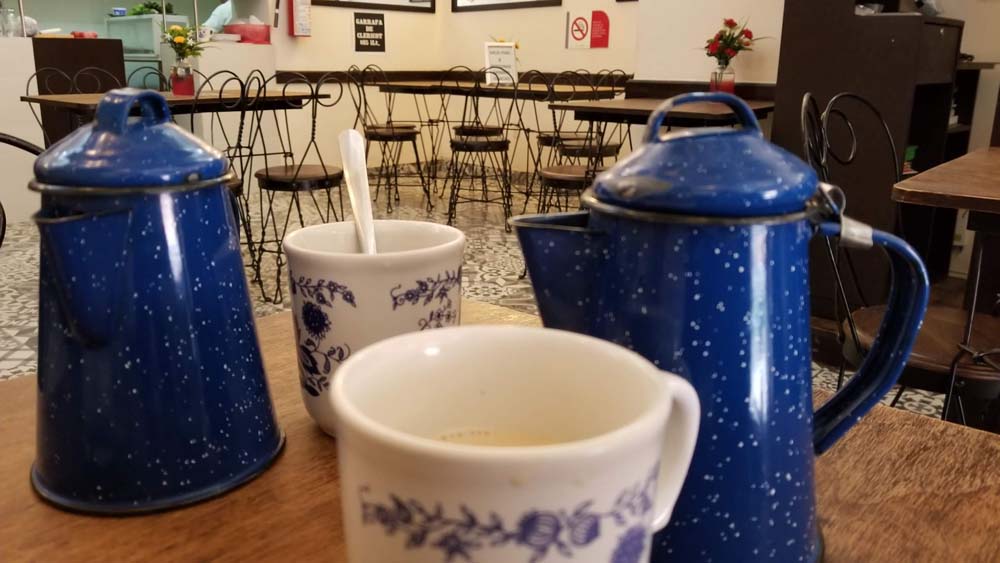

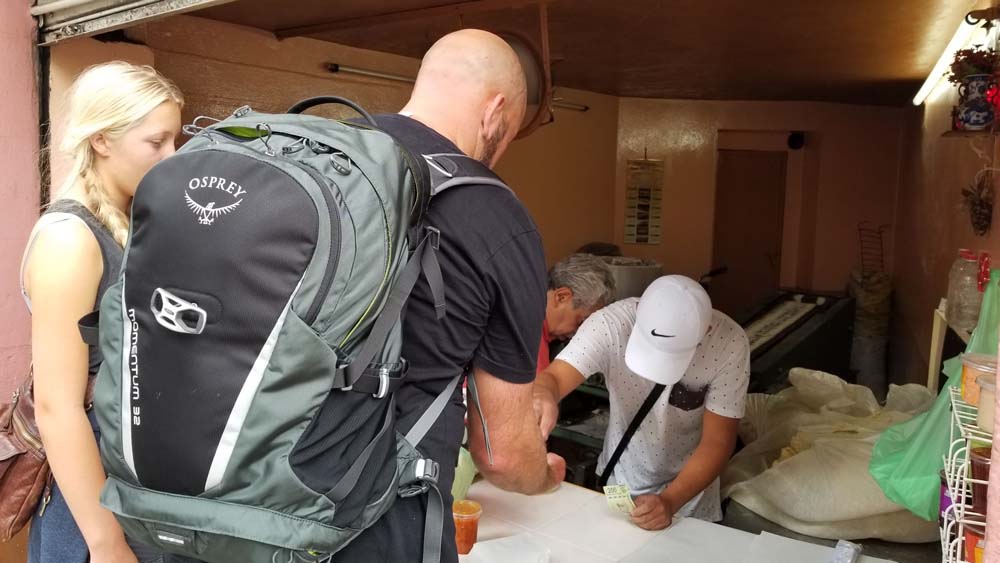

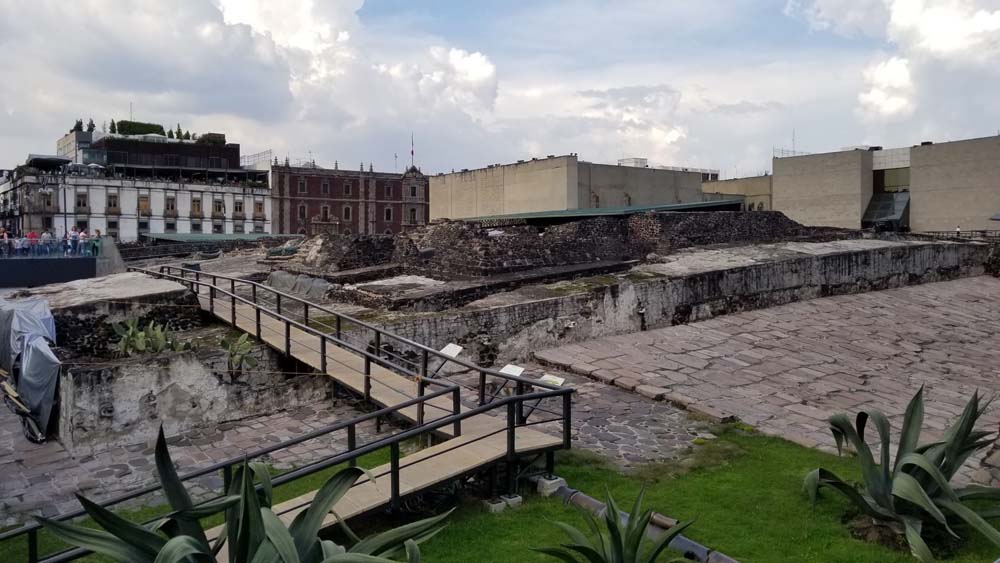
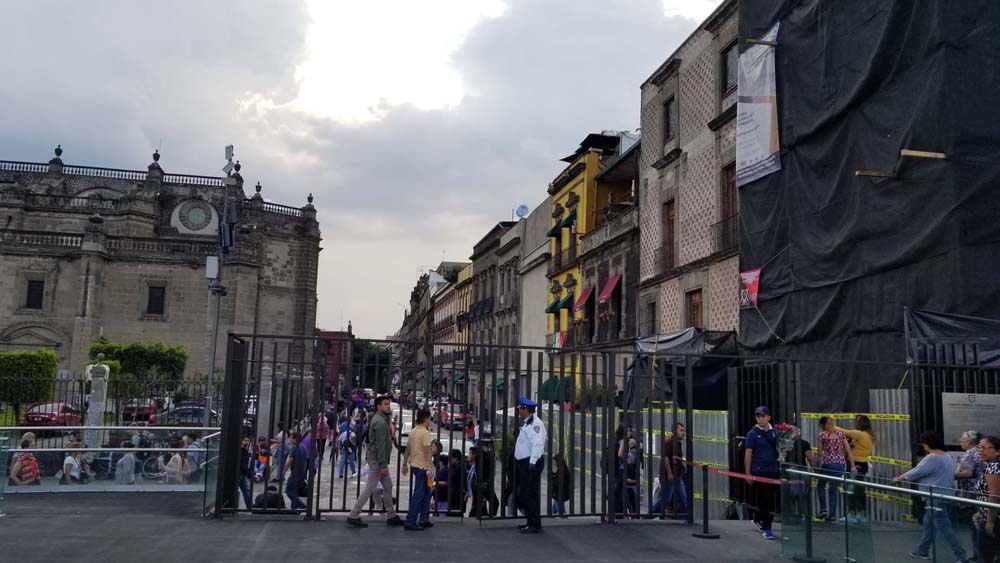
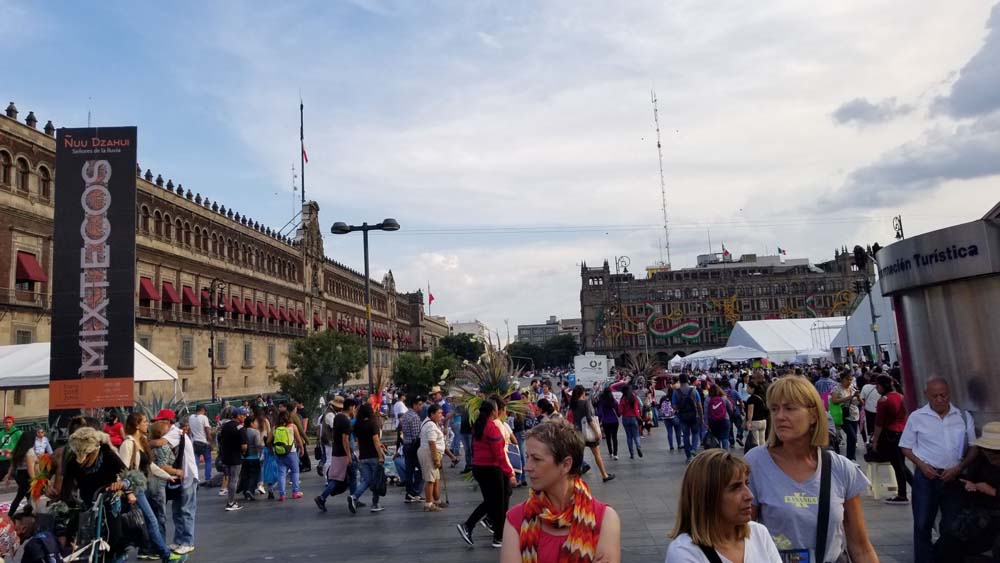
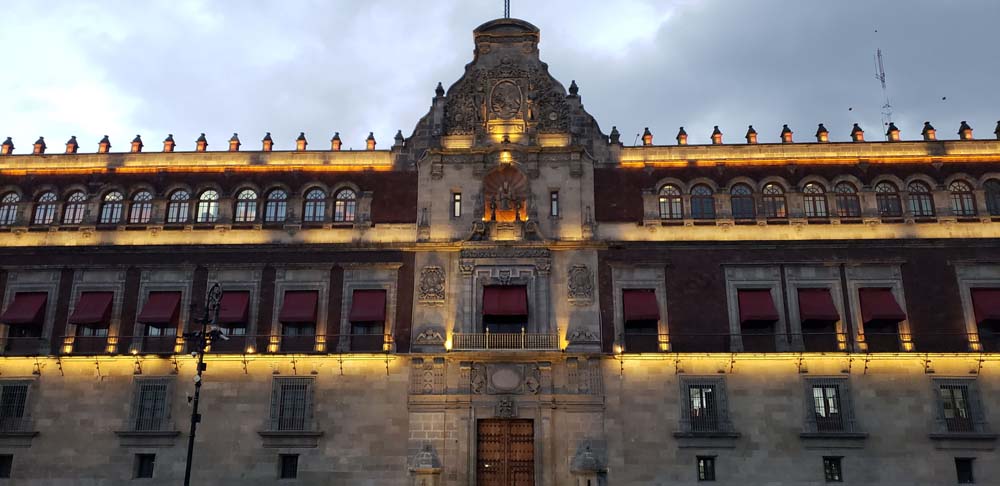

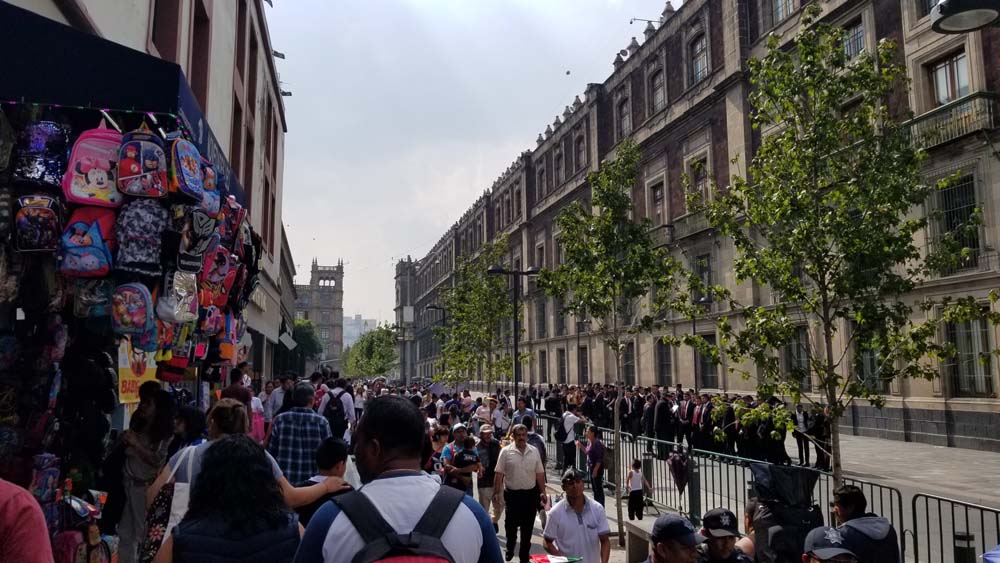
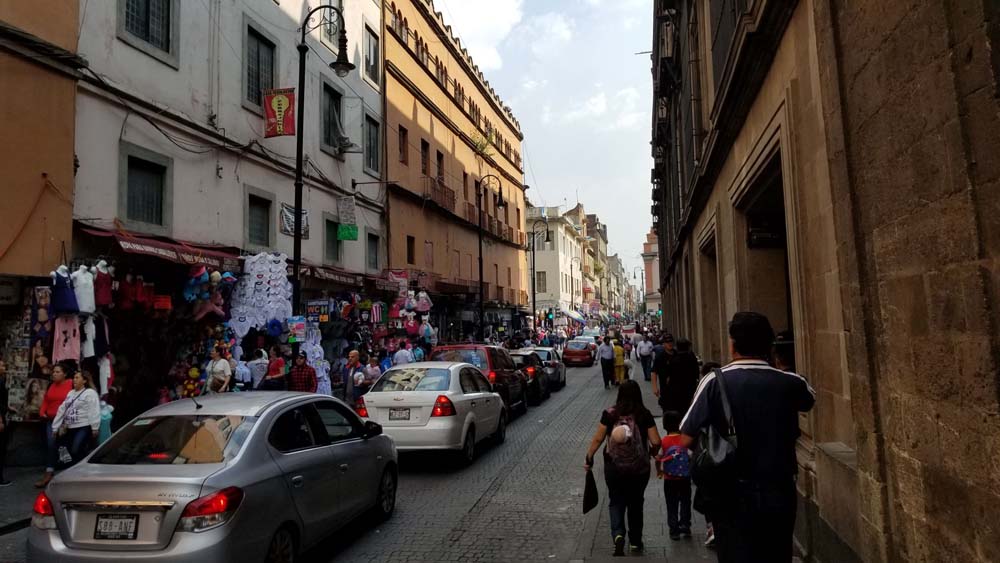
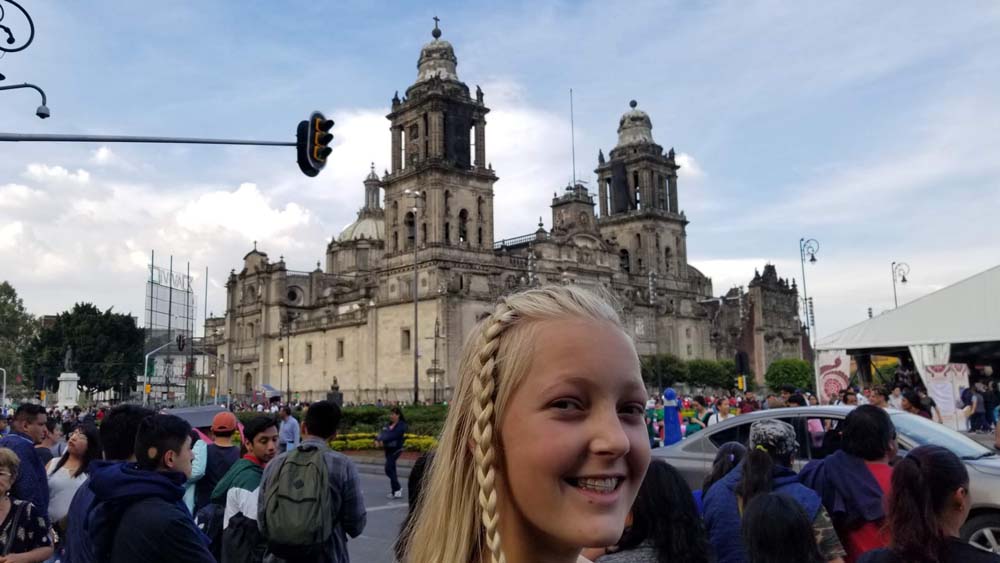
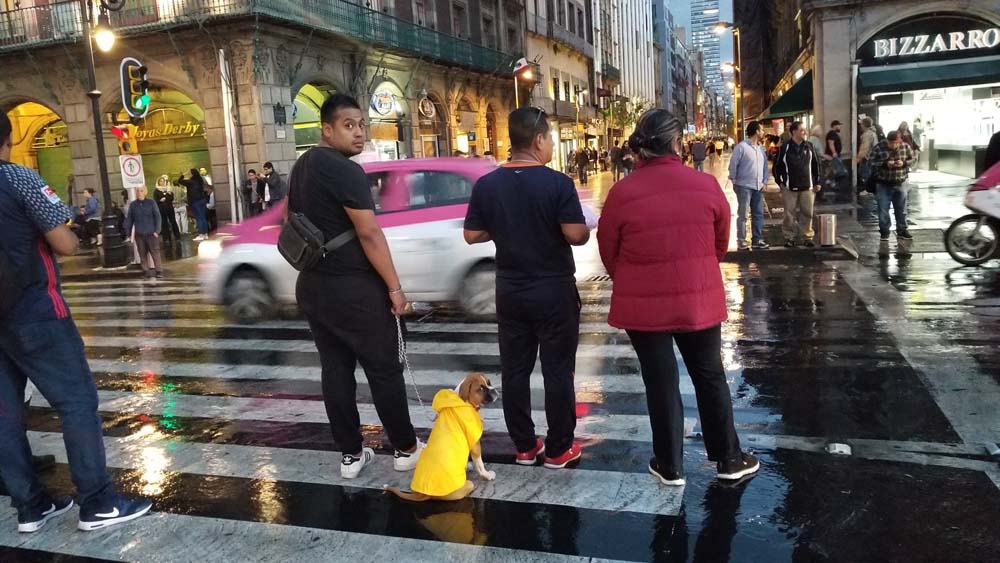

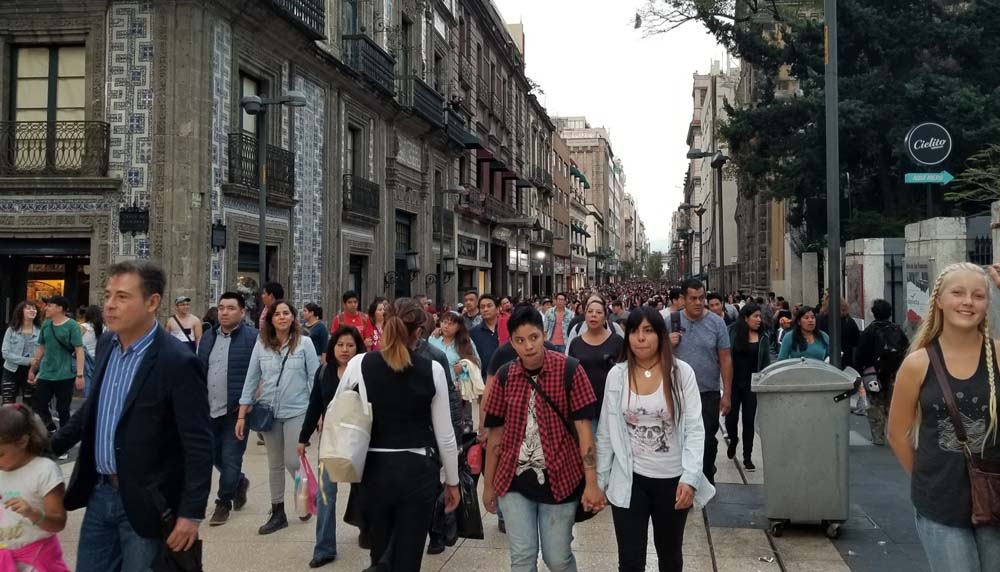


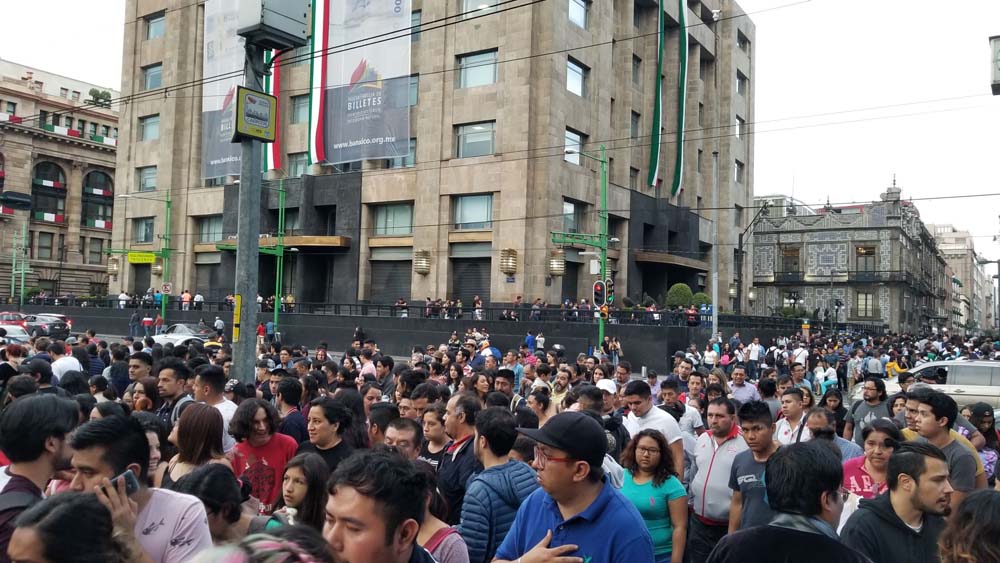
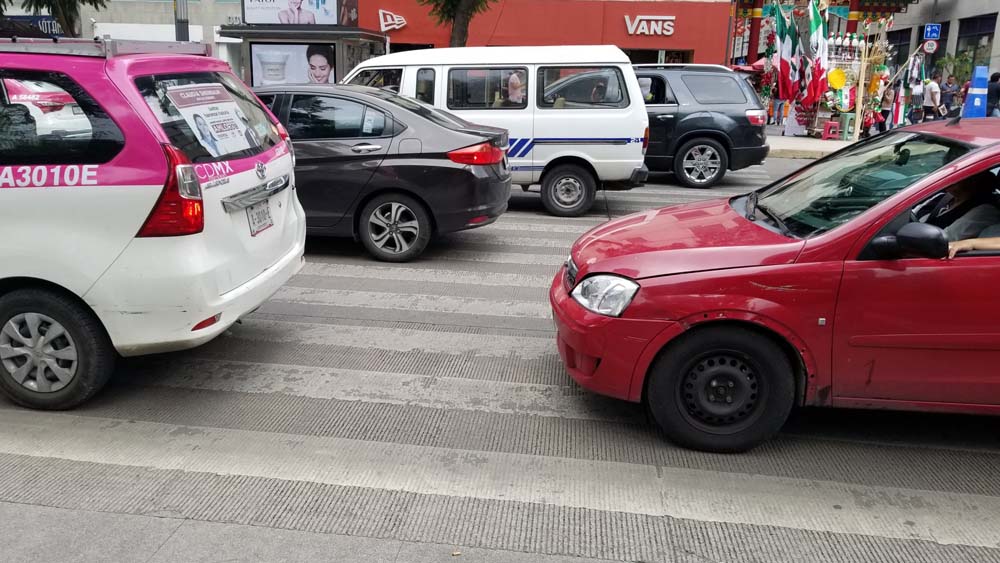
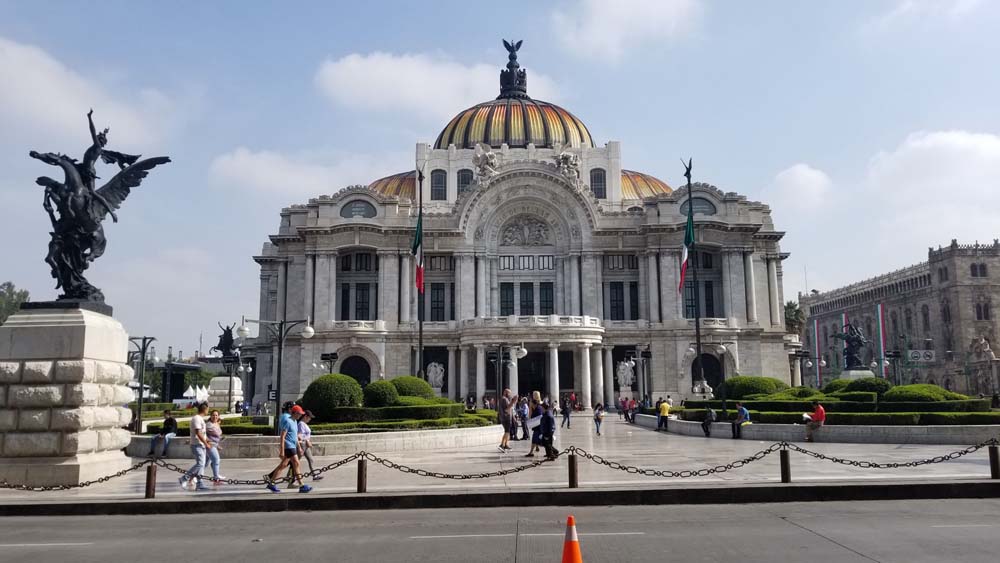
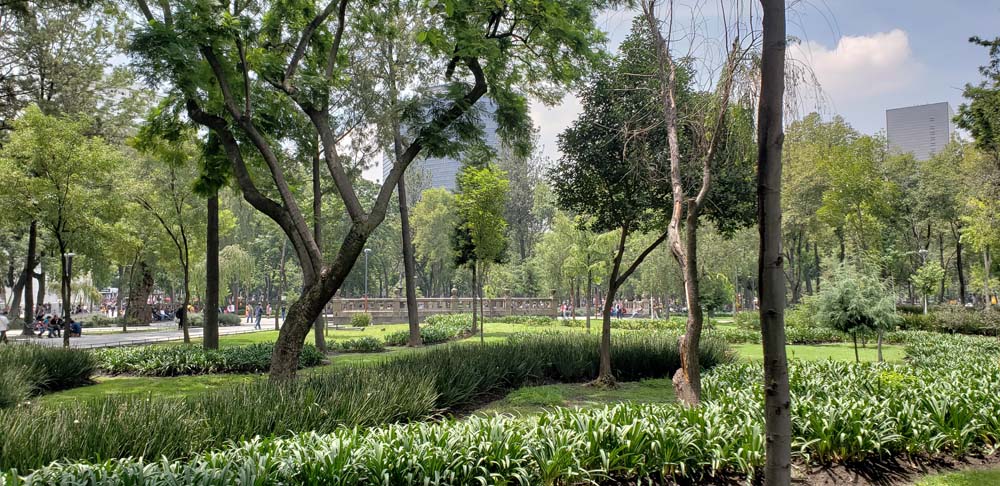
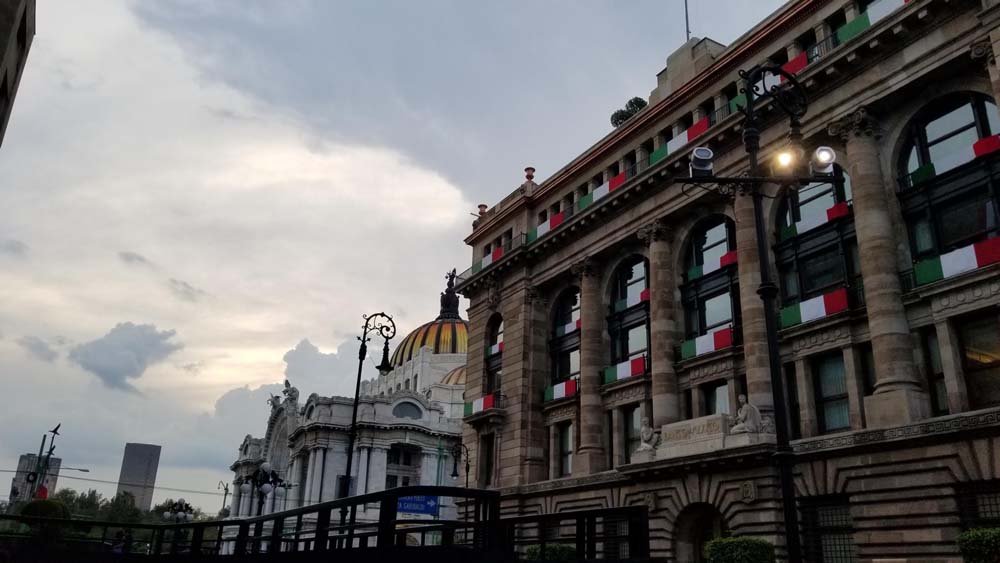
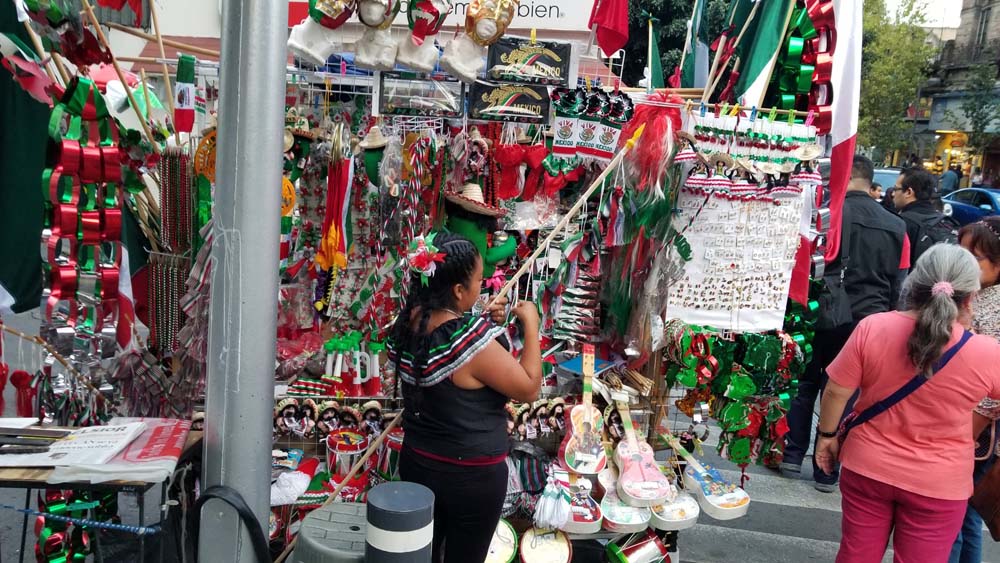
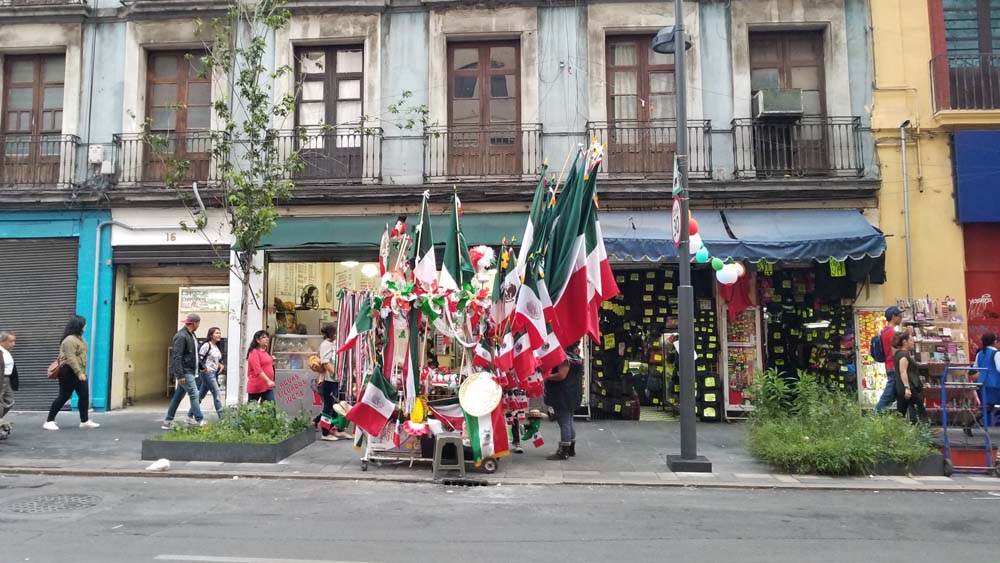
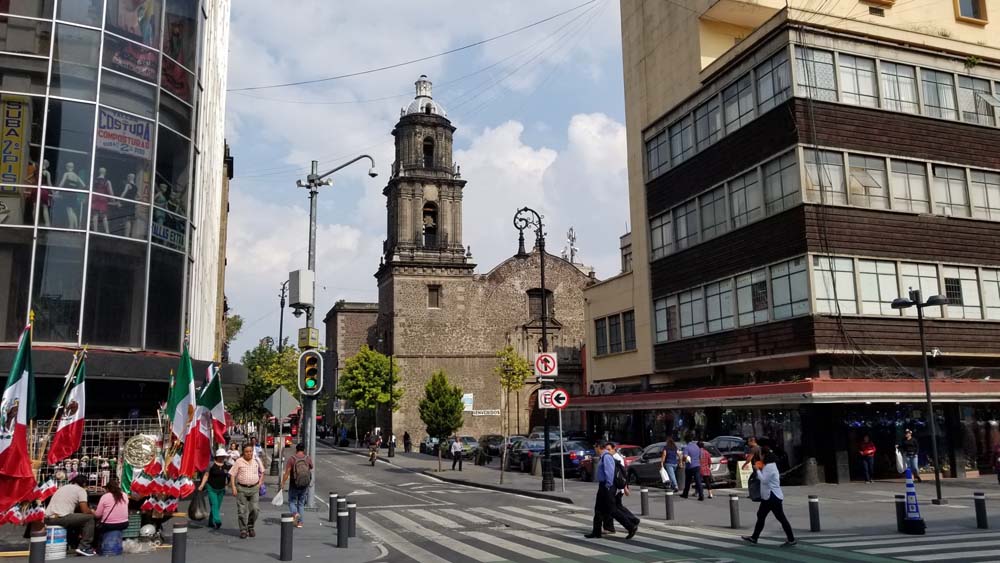


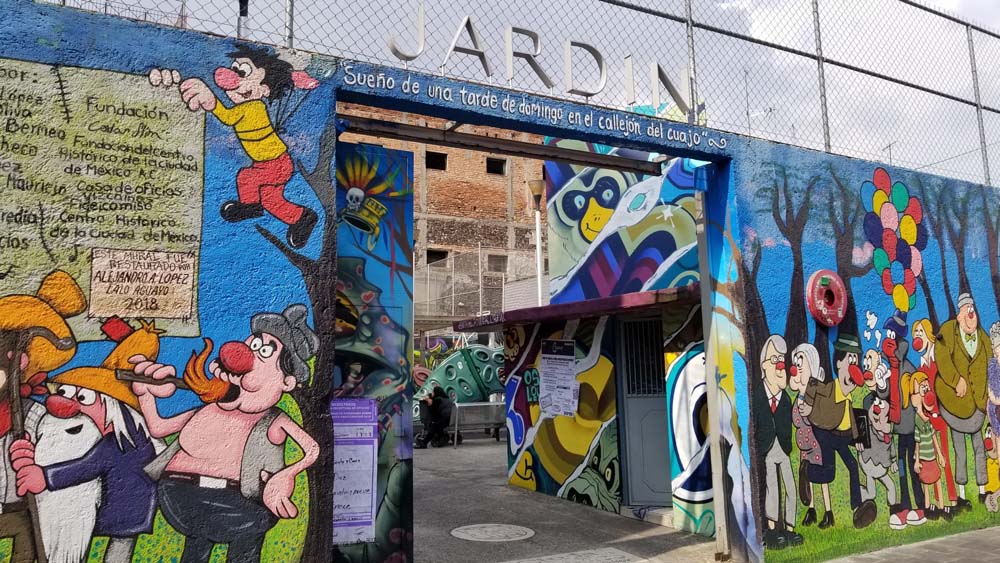

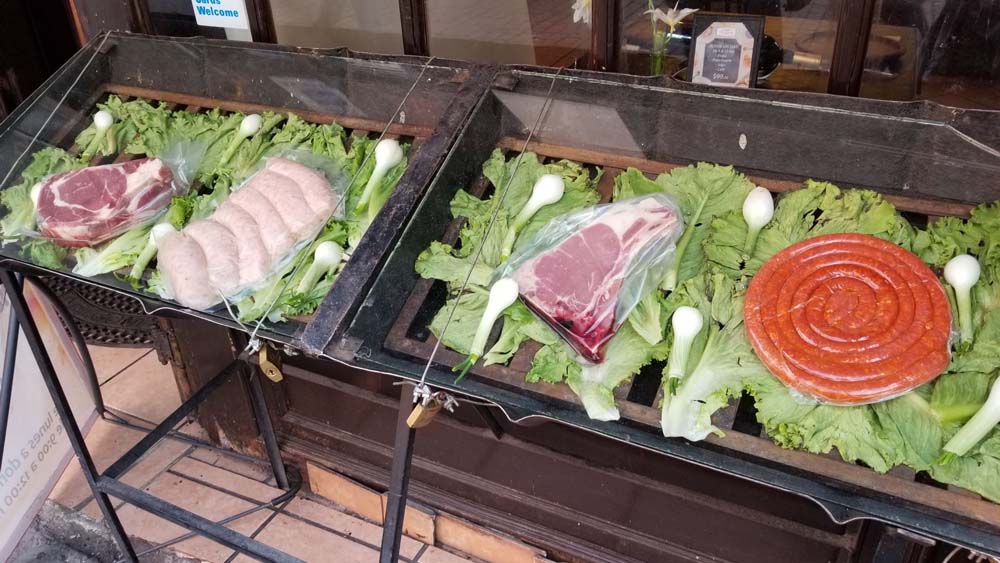


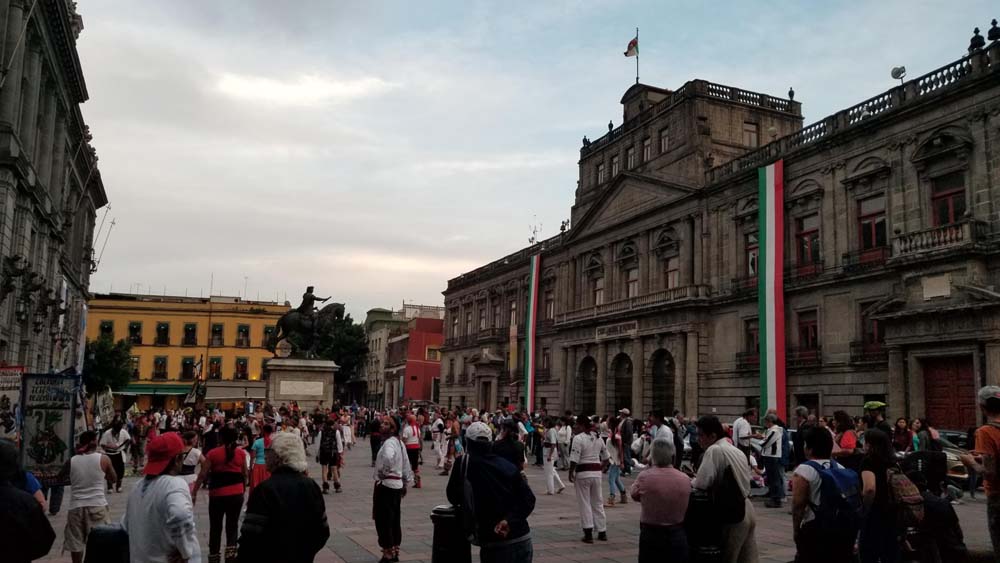
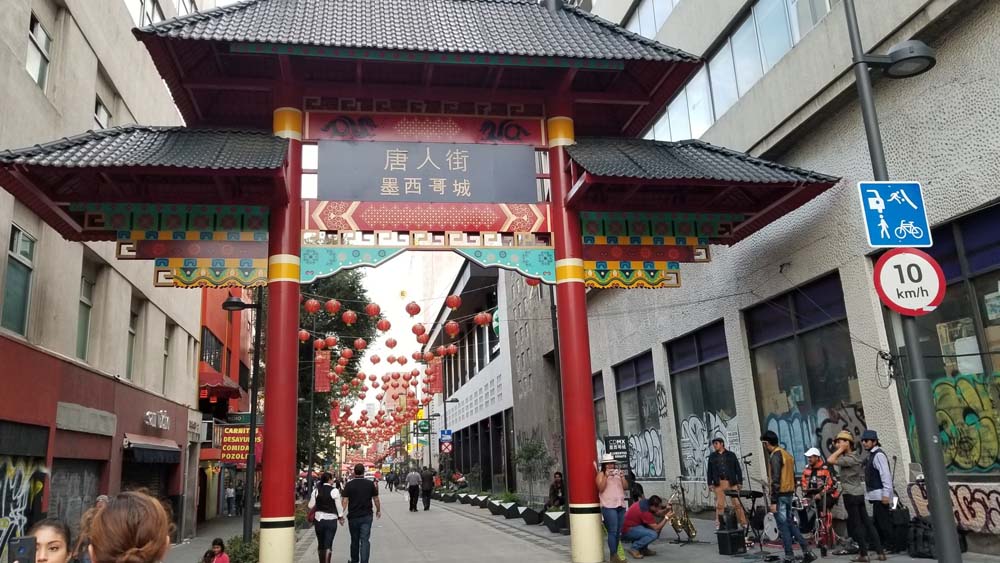



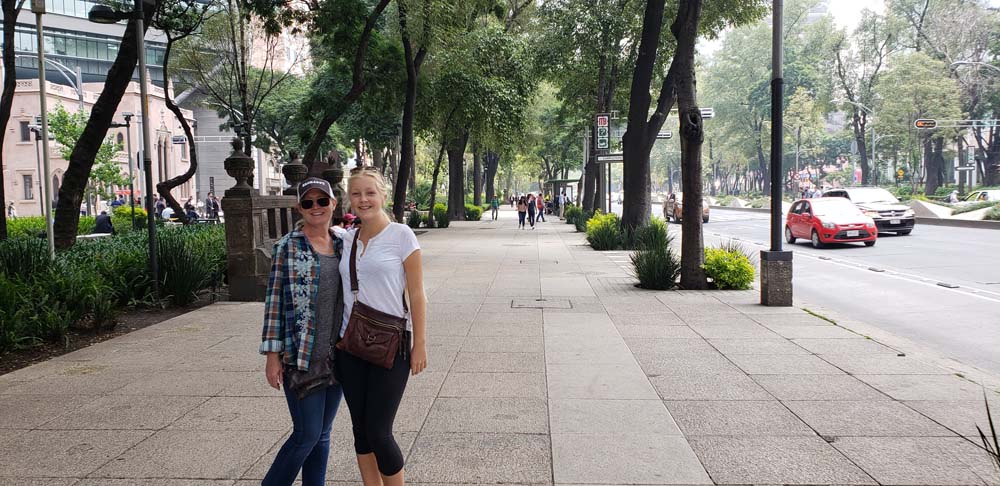
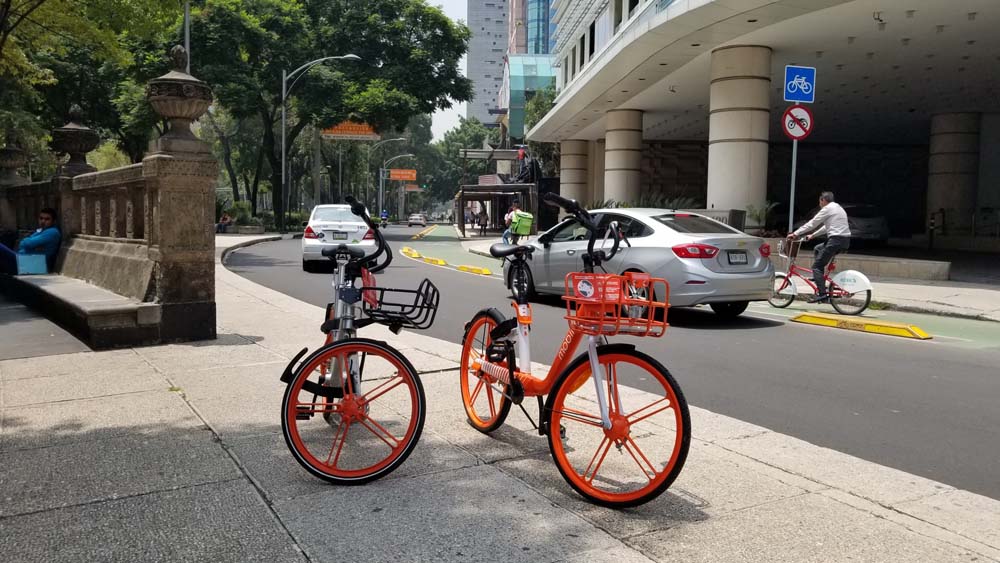

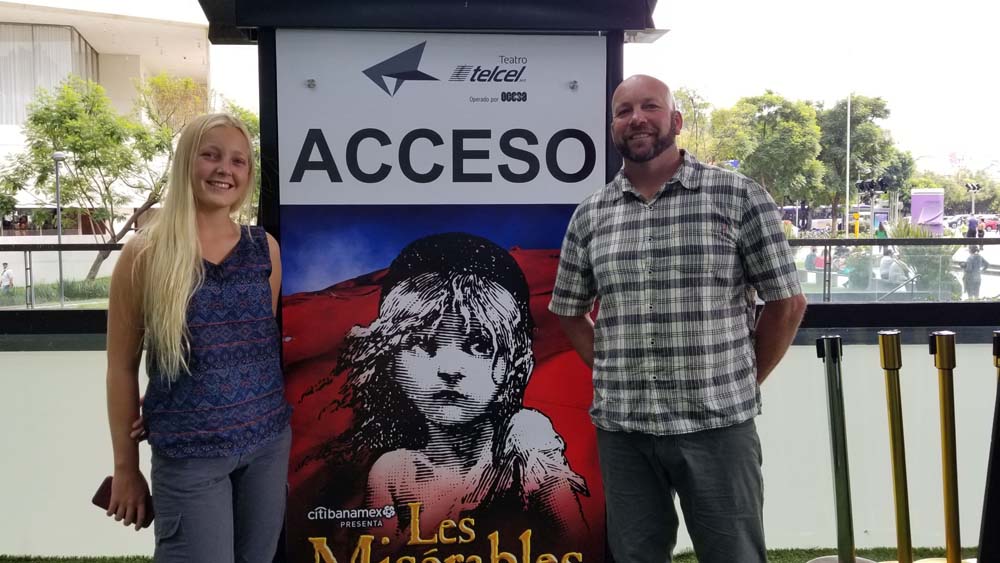
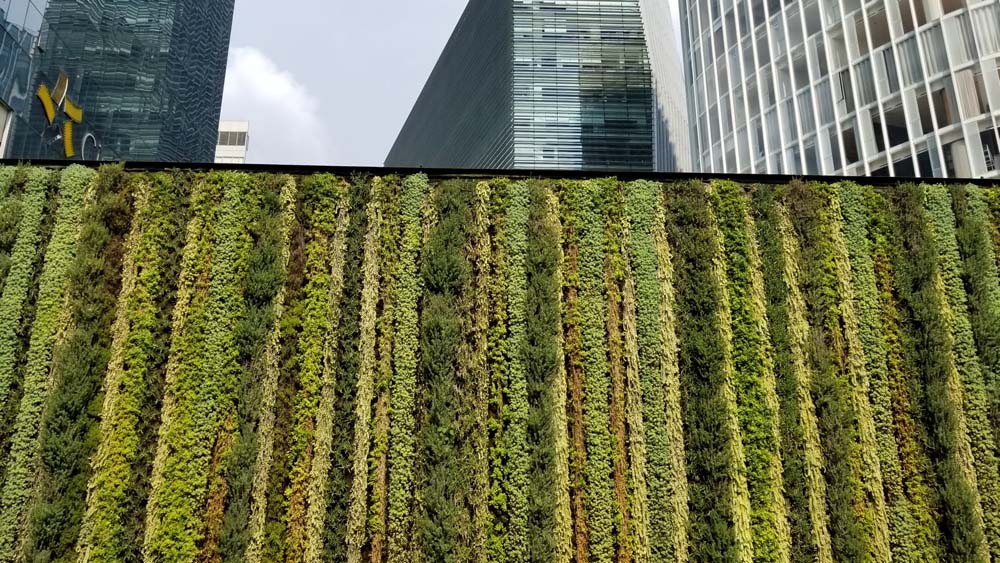
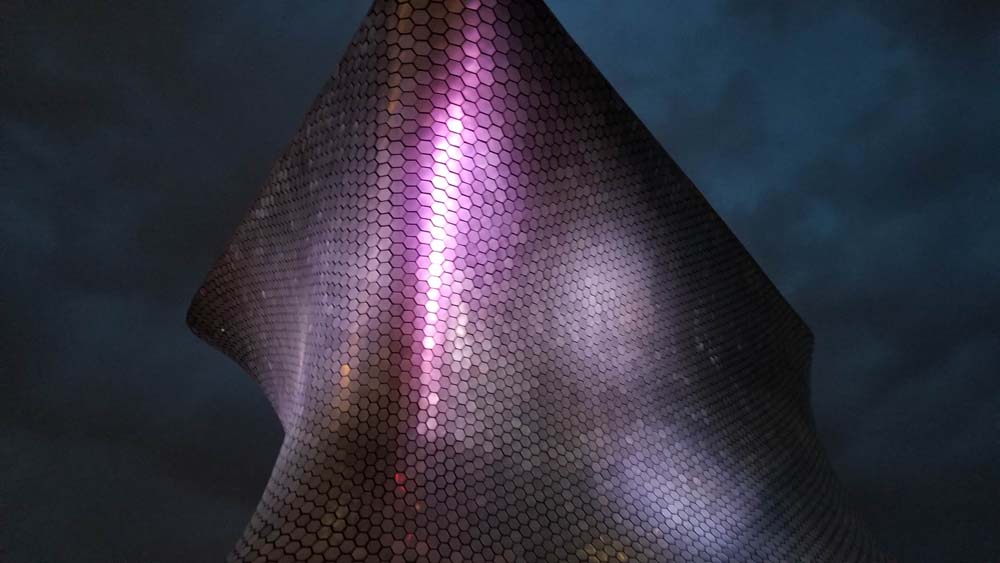


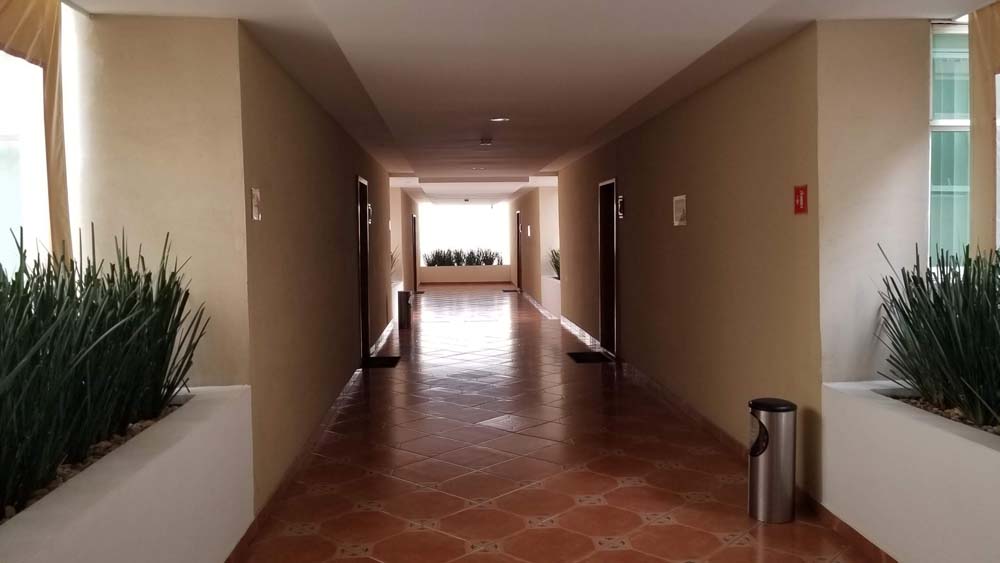



Hi, very nice website, cheers!
——————————————————
Need cheap and reliable hosting? Our shared plans start at $10 for an year and VPS plans for $6/Mo.
——————————————————
Check here: https://www.good-webhosting.com/